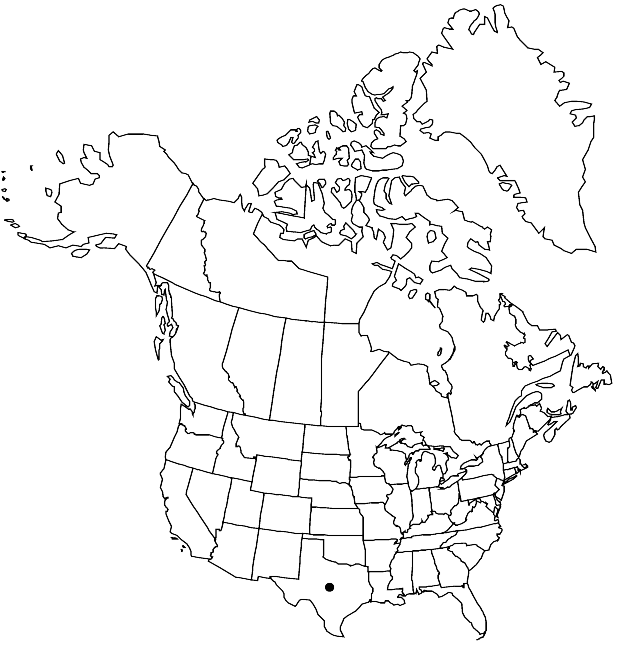Salix thurberi
Bull. Torrey Bot. Club 27: 252. 1900.
Shrubs or trees, 4–10 m. Stems: branches redbrown, glabrous or glabrescent; branchlets yellow-green, redbrown, or violet, tomentose or pubescent to glabrescent. Leaves: stipules absent or rudimentary; petiole 0–4 (–8) mm, pubescent or short-silky adaxially; largest medial blade linear, 66–95 (–140) × 2–16 mm, 11–35 times as long as wide, base cuneate, margins flat, remotely spinulose-serrulate, apex acute to subacuminate, abaxial surface very thinly glaucous, sparsely short-silky (especially along midrib), to glabrescent, adaxial slightly glossy, short-silky, pilose to glabrescent; proximal blade margins entire; juvenile blade reddish or yellowish green, moderately densely to sparsely long-silky to glabrescent abaxially. Catkins: staminate 8–35 × 6 mm, flowering branchlet 3–55 mm; pistillate loosely flowered, slender, 15–40 (–50) × 3.2–8 mm, flowering branchlet 7–28 mm; floral bract 2–4 mm, apex acute or acuminate, entire, abaxially hairy, hairs wavy. Staminate flowers: abaxial nectary absent, adaxial nectary ovate, narrowly oblong, or flask-shaped, 0.6–1.4 mm; filament hairy; anthers 0.3–0.8 mm. Pistillate flowers: adaxial nectary narrowly oblong to ovate, 0.4–0.7 mm, shorter to longer than stipe; stipe 0–0.8 mm; ovary obclavate to pyriform, densely long-silky or villous, beak abruptly tapering to styles; ovules 16–36 per ovary; styles 0–0.2 mm; stigmas flat, abaxially non-papillate with rounded tip, or broadly cylindrical, 0.3–0.7 mm. Capsules (2.5–) 4–7 mm.
Phenology: Flowering Mar–Dec.
Habitat: Sandy to silty floodplains, disturbed areas
Elevation: 0-1600 m
Distribution

Tex., Mexico (Chihuahua), Mexico (Coahuila), Mexico (Hidalgo), Mexico (Nuevo León), Mexico (Tamaulipas), Mexico (Veracruz)
Discussion
The description above is based on specimens supplemented by published descriptions (W. W. Rowlee 1900; C. R. Ball 1961; R. D. Dorn 1998). Ball noted that aside from some characters, Salix thurberi is similar to S. interior. Ball’s and Dorn’s concepts of the species were not the same because Ball gave the Texas distribution as Brewster, Cameron, El Paso, Guadalupe, Hidalgo, Jeff Davis, Matagorda, Starr, and Val Verde counties, but Dorn recognized it only in Pecos and Val Verde counties.
Selected References
None.